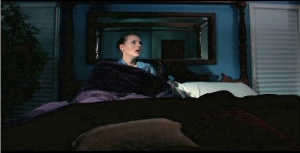Last Night: Abridged
Last night, during a house party, a complete stranger came up to me and drilled a hole in the base of my spine. First my knees buckled, then I lost all feeling in the left side of my face. Drool dribbled down my chin as my lips flapped in a pitiful attempt to ask, “What’s happening to me?” It sounded more like, “Wuh appelang oo ee?” I proceeded to flail around, trying to get any one of the dozens of party goers to help me. They believed me to be drunk and began to murmur about cabs and bad form. I was humiliated and scared, but no one would listen to me because no one could understand me.
I began to shake people. They shook me off. I stumbled around saying something that approximated “hey” and got a lit cigarette shoved in my mouth. I coughed so hard on it that not only did I choke, but I pissed my own pants. At that point, a good and trusted friend led me away from the party and left me standing under a patch of moonlight by the woods. All the while, the pea-sized hole in my back gaped open, mocking me in its dryness, its lack of oozing blood or anything that I could point to as proof that I was hurt. The unknown person who had done the damage stood on the stoop holding up the electric drill, whizzing it to life for the benefit of saying,”Don’t you dare come back.”
Standing alone in the darkness just beyond the reach of the porch lights, staring back at this person that I didn’t even know but hated to the core of my person, my whole body went numb. My knees threatened to give way, but I managed to hold my ground. Probably just for spite. My feet planted themselves in the freshly dead leaves, and refused to move from that spot, until, one moment after many moments very much like it, I began to move. Step by agonizing step I trudged and wobbled my way back to the party. Back to the lights. The noise. The people. The person. Back to confront my worst fear…
Yep, you guessed it. That was a dream. But I’d have been an idiot to preface it with that. That’s Rule #1, and pretty much the only “rule” when it comes to translating one’s dreams into a dramatically told story. Repeat: do not let us know that the story you’re telling us is a dream either at all, or until the proper moment, which absolutely is not at the beginning. I’ve seen even seasoned writer’s make this mistake, and there’s just no excuse for it. Did you know, for instance, that Frank Darabont had originally written a dream sequence into the 3rd Act of The Shawshank Redemption that was never shot? Old Frank thought it was perhaps his best bit of writing in the entire script (which is saying something, since the script is phenomenally good), but the producers and execs took one look at it and said, “Cut it.” Or something along those lines. As much as I admire Darabont’s writing, I have to agree with the big wigs. The reason that and most other dream sequences don’t work is simply this: when we know it’s a dream, the stakes are so low as to rob us of drama, tension, and conflict. Unless, of course, we’re talking about Nightmare on Elm Street where the consequence of dreaming is death, or Inception where one is invading dreams, and again there is the possibility of fatal injury.
Okay now that you have that rule down let’s look at some helpful hints.
Helpful Hint #1
If you’re going to pull more than a moment from your dream, and are in fact trying to create a work of any length, there are a few writing styles that dreams really adapt to well: Expressionism, Surrealism, Magic Realism, and Horror. I would suggest that you take a look at the most inspiring moment from your dream, figure out which style it naturally lends itself to, and after you’ve chosen one of these styles, try to work within that particular “box.”
Having trouble deciding? Here’s a rough breakdown of these styles that might help. Horror, for instance lends itself nicely to nightmares when we, the audience, either don’t realize it’s a dream or, like, in Nightmare on Elm Street there are real stakes to the characters falling asleep. Magic Realism tends to lend itself to dream-like stories full of fantasy and the sort of fantastical imagery that sparks the imagination and doesn’t need to play by the logical rules of the universe. (However, if you’re going to write in that style you do want to force your story into some sort of logical box lest you stray into the territory of Surrealism.) Expressionism is handy because you can get away with a lot of things like writing stereotypical characters (and in a dream, people tend to be like that), plus you have the whole “am I insane or is just this world?” thing going for you. Surrealism is an obvious choice considering that’s what it was made for and the farther you get from logic, the better. On the subject of logic…
Helpful Hint #2
The glass is structure. Like any screenplay, your dream-story must have structure (see previous posts for structure breakdowns). No matter which of these styles you chose to write in, you must establish a sense of order or “logic”(a.k.a the rules of the world), and the writing conventions you’re using in the 1st Act. This is key, otherwise people will feel like you’re cheating, using cheap tricks to get your protagonist in or out of trouble, or that you have tone issues. That’s actually true of any cinematic story, so please do file it away.
Helpful Hint #3
Dreams, as much as they can be inspiring are death to internalize. Do not, under any circumstances try to analyze your dream. Don’t look up the meaning of your dream on the interwebs, don’t pretend you or your best friend is Freud, and definitely do not try to write your dream exactly as it happened (unless you dream in perfect story form, which I highly doubt, because stories are organized and structured, whereas dreams are free flowing). Instead, think of your dream as a jumping off point. Pick the moments that stand out in your mind, and had the most resonance with your feelings, and build a story around them. Not on them, but around them. If you build the foundation of your story on a moment from a dream, the problem is that people likely won’t get it. Usually there’s a lot of backstory and personal baggage that come along with dreams and help the dreamer get their bearings. Those are lost on outsiders. Remember too that just like any other screenplay, you have to establish and maintain conflict, tension, and dramatic visuals. But the main thing to take away from this hint is that YOU, the writer assigns meaning to the story; the dream does not.
Helpful Hint #4
The antidote is the same for writing a dream-story as it is for writing any other story. First, figure out who your protagonist is, then what they want (their goal), and their need (the thing they need to learn). This will help keep you track, and make your screenplay read like it should. Without a clear protagonist set on a journey, all the cool visuals you’re working with will corrode all your good intentions down to nothing. Secondly, like in any other screenplay you need a strong inciting incident to get the ball rolling. Thirdly, remember that a story, unlike a dream, has to have a beginning, middle, and and end.
Helpful Hint #5
This last bit goes back to Rule #1. Ask a friend to read your screenplay, but don’t tell them it was based on a dream. If they come back to you and say, “Wow, you have a really active imagination,” then you know you’re on the right track. The last thing you want to do is give credit to your subconscious, because, remember, the dream is just the jumping off point. It’s your diligence, active thinking and plotting that will turn that inspiration into a full fledged screenplay.
And with those 5 simple hints, you’re off and running.
Happy writing!
Holly







